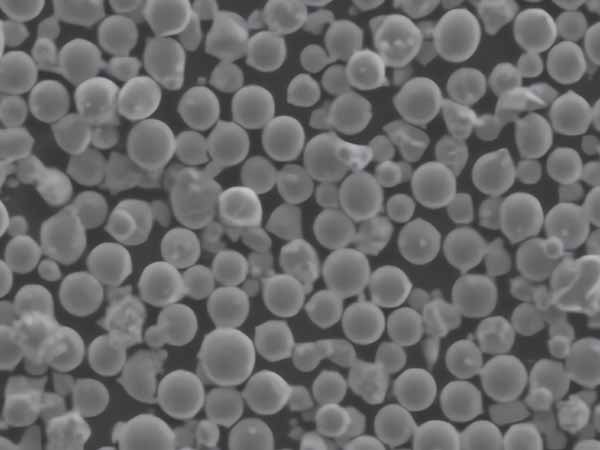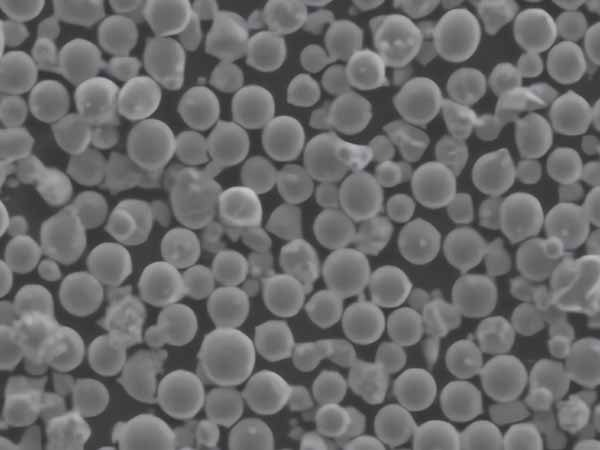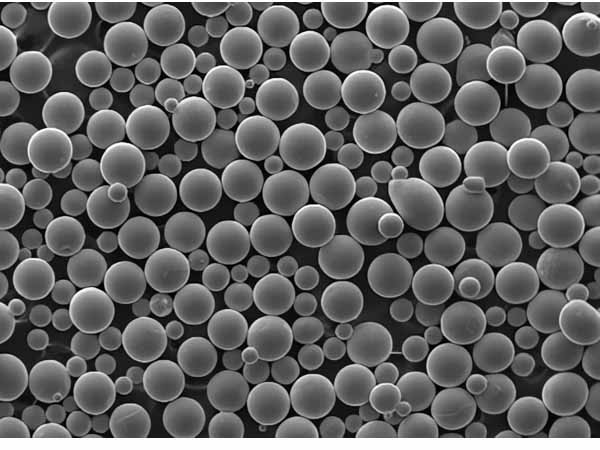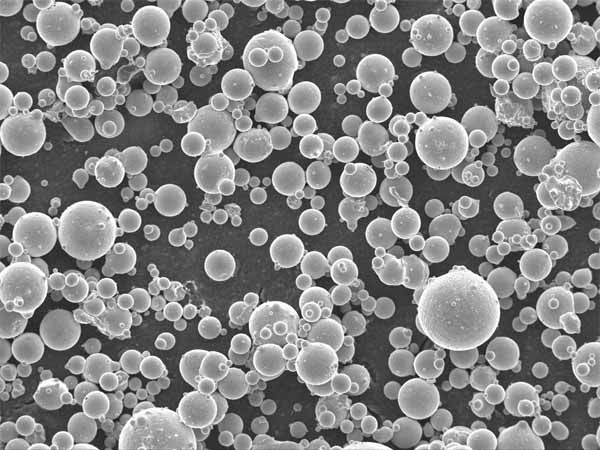Welcome to the ultimate guide on spheroidization powder! If you’re looking to delve into the world of metal powders, you’ve landed at the right place. In this article, we’ll explore the fascinating realm of spheroidization powder, its applications, types, characteristics, and much more. So, let’s jump right in and unravel the mysteries of spheroidization powder together!
Overview of Spheroidization Powder
Spheroidization powder, often referred to as spherical metal powder, is a type of powder with particles that have been processed to achieve a spherical shape. This unique characteristic is achieved through various methods, including gas atomization, plasma atomization, and centrifugal atomization. The spherical shape offers numerous advantages, making these powders highly desirable in various industrial applications.
Key Details of Spheroidization Powder:
- Definition: Metal powder with spherical particles.
- Methods: Gas atomization, plasma atomization, centrifugal atomization.
- Applications: Additive manufacturing, thermal spray coatings, powder metallurgy, and more.

Composition of Spheroidization Powder
Spheroidization powders come in a variety of metal compositions, each tailored to specific applications. Below is a detailed table presenting the types, composition, properties, and characteristics of common spheroidization powders.
| Type of Powder | Composition | Properties | Characteristics |
|---|---|---|---|
| Titanium (Ti-6Al-4V) | Ti, Al, V | High strength, lightweight | Excellent corrosion resistance, biocompatible |
| Stainless Steel (316L) | Fe, Cr, Ni, Mo | High corrosion resistance, ductile | Ideal for medical and food applications |
| Aluminum (AlSi10Mg) | Al, Si, Mg | Lightweight, high thermal conductivity | Good casting properties, high fatigue resistance |
| Nickel Alloy (IN718) | Ni, Cr, Fe, Nb | High strength at elevated temperatures | Excellent oxidation and corrosion resistance |
| Cobalt-Chrome (CoCr) | Co, Cr, Mo | High wear resistance, biocompatible | Used in dental and orthopedic implants |
| Copper (CuCr1Zr) | Cu, Cr, Zr | Excellent electrical conductivity | High thermal and electrical conductivity |
| Tungsten Carbide (WC) | W, C | Extremely hard, wear-resistant | Ideal for cutting tools, abrasives |
| Tool Steel (M2) | Fe, C, Cr, Mo | High hardness, wear resistance | Used in cutting tools, high-speed applications |
| Bronze (CuSn10) | Cu, Sn | High corrosion resistance, good machinability | Used in bearings, bushings |
| Magnesium Alloy (AZ91D) | Mg, Al, Zn | Lightweight, high strength-to-weight ratio | Good corrosion resistance in marine environments |
Applications of Spheroidization Powder
The applications of spheroidization powders are as diverse as their compositions. Here’s a table showing various applications and the types of powders commonly used for each.
| Application | Commonly Used Powders |
|---|---|
| Additive Manufacturing | Titanium (Ti-6Al-4V), Stainless Steel (316L), Aluminum (AlSi10Mg) |
| Thermal Spray Coatings | Nickel Alloy (IN718), Tungsten Carbide (WC), Cobalt-Chrome (CoCr) |
| Powder Metallurgy | Tool Steel (M2), Bronze (CuSn10), Stainless Steel (316L) |
| Electronics | Copper (CuCr1Zr), Aluminum (AlSi10Mg) |
| Medical Implants | Titanium (Ti-6Al-4V), Cobalt-Chrome (CoCr), Stainless Steel (316L) |
| Aerospace Components | Titanium (Ti-6Al-4V), Nickel Alloy (IN718), Aluminum (AlSi10Mg) |
| Automotive Parts | Magnesium Alloy (AZ91D), Tool Steel (M2), Aluminum (AlSi10Mg) |
| Marine Applications | Bronze (CuSn10), Stainless Steel (316L), Magnesium Alloy (AZ91D) |
| Cutting Tools | Tungsten Carbide (WC), Tool Steel (M2) |
| Food Industry Equipment | Stainless Steel (316L), Bronze (CuSn10) |
Specifications, Sizes, Grades, Standards
To help you understand the specifications, sizes, grades, and standards of spheroidization powders, we have compiled the following detailed table.
| Powder Type | Size Range (µm) | Grades | Standards |
|---|---|---|---|
| Titanium (Ti-6Al-4V) | 15-45, 45-75 | Grade 23 | ASTM F2924 |
| Stainless Steel (316L) | 10-45, 45-105 | 316L-1, 316L-2 | ASTM A276, ISO 5832-1 |
| Aluminum (AlSi10Mg) | 20-63, 45-90 | AlSi10Mg-1 | DIN EN 1706 |
| Nickel Alloy (IN718) | 15-45, 45-105 | IN718-1 | ASTM B637, AMS 5662 |
| Cobalt-Chrome (CoCr) | 20-45, 45-90 | CoCr-1 | ASTM F75, ISO 5832-4 |
| Copper (CuCr1Zr) | 20-45, 45-105 | CuCr1Zr-1 | UNS C18150 |
| Tungsten Carbide (WC) | 10-30, 30-60 | WC-1 | ISO 9001 |
| Tool Steel (M2) | 15-45, 45-105 | M2-1, M2-2 | ASTM A600 |
| Bronze (CuSn10) | 20-63, 45-90 | CuSn10-1 | ASTM B22 |
| Magnesium Alloy (AZ91D) | 15-45, 45-105 | AZ91D-1 | ASTM B93, ASTM B94 |






Suppliers and Pricing Details
Here’s a table listing some of the leading suppliers of spheroidization powders along with pricing details.
| Supplier | Powder Types Available | Price Range (per kg) |
|---|---|---|
| Höganäs AB | Stainless Steel (316L), Nickel Alloy (IN718) | $50 – $150 |
| Sandvik Materials Technology | Titanium (Ti-6Al-4V), Tool Steel (M2) | $70 – $200 |
| Carpenter Technology | Cobalt-Chrome (CoCr), Tungsten Carbide (WC) | $100 – $250 |
| Arcam AB (GE Additive) | Titanium (Ti-6Al-4V), Aluminum (AlSi10Mg) | $60 – $180 |
| LPW Technology (Carpenter Additive) | Stainless Steel (316L), Copper (CuCr1Zr) | $80 – $220 |
| Oerlikon Metco | Nickel Alloy (IN718), Cobalt-Chrome (CoCr) | $90 – $230 |
| AP&C (GE Additive) | Titanium (Ti-6Al-4V), Aluminum (AlSi10Mg) | $65 – $190 |
| Praxair Surface Technologies | Tool Steel (M2), Tungsten Carbide (WC) | $110 – $270 |
| Ecka Granules | Bronze (CuSn10), Magnesium Alloy (AZ91D) | $55 – $160 |
| Tekna Plasma Systems | Stainless Steel (316L), Copper (CuCr1Zr) | $85 – $210 |
Comparing Pros and Cons, Advantages and Limitations
To give you a clearer picture, let’s compare the pros and cons of using different spheroidization powders.
| Powder Type | Pros | Cons |
|---|---|---|
| Titanium (Ti-6Al-4V) | Lightweight, strong, corrosion-resistant | Expensive, difficult to machine |
| Stainless Steel (316L) | Corrosion-resistant, versatile | Relatively heavy, lower thermal conductivity |
| Aluminum (AlSi10Mg) | Lightweight, good casting properties | Lower strength compared to steel |
| Nickel Alloy (IN718) | High strength at high temperatures | Expensive, difficult to weld |
| Cobalt-Chrome (CoCr) | Biocompatible, wear-resistant | Expensive, brittle |
| Copper (CuCr1Zr) | Excellent electrical and thermal conductivity | Susceptible to oxidation |
| Tungsten Carbide (WC) | Extremely hard, wear-resistant | Very brittle, expensive |
| Tool Steel (M2) | High hardness, wear resistance | Susceptible to corrosion, difficult to machine |
| Bronze (CuSn10) | Corrosion-resistant, good machinability | Lower strength, heavier |
| Magnesium Alloy (AZ91D) | Lightweight, good corrosion resistance | Highly flammable, lower strength |

FAQs
Here are some frequently asked questions about spheroidization powder, formatted in a table for clarity.
| Question | Answer |
|---|---|
| What is spheroidization powder? | Spheroidization powder consists of metal particles processed to be spherical in shape. |
| How is spheroidization powder made? | It is made using methods like gas atomization, plasma atomization, and centrifugal atomization. |
| What are the advantages of spheroidization powder? | Enhanced flowability, consistent packing density, and superior mechanical properties. |
| Which industries use spheroidization powder? | Aerospace, automotive, medical, electronics, and manufacturing industries. |
| Can spheroidization powder be used in 3D printing? | Yes, it is widely used in additive manufacturing and 3D printing. |
| What are the common metals used in spheroidization powders? | Titanium, stainless steel, aluminum, nickel alloys, cobalt-chrome, and more. |
| Is spheroidization powder expensive? | The cost varies depending on the metal type and particle size, ranging from $50 to $270 per kg. |
| How do I choose the right spheroidization powder? | Consider factors like application requirements, mechanical properties, and cost. |
| Are there any safety concerns with spheroidization powder? | Some powders, like magnesium alloys, are flammable and require careful handling. |
| Where can I buy spheroidization powder? | Reputable suppliers include Höganäs AB, Sandvik Materials Technology, Carpenter Technology, and more. |
Conclusion
Spheroidization powder is a versatile and essential material in various industrial applications. From additive manufacturing to aerospace and medical implants, its unique properties and benefits make it a top choice. Whether you’re considering using titanium, stainless steel, aluminum, or any other metal, understanding the composition, characteristics, and applications will help you make an informed decision.
Remember, the key to selecting the right spheroidization powder lies in understanding your specific needs and matching them with the powder’s properties. With this comprehensive guide, you’re well on your way to mastering the world of spheroidization powders. Happy exploring!




